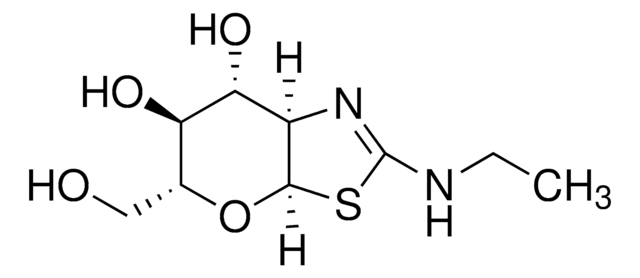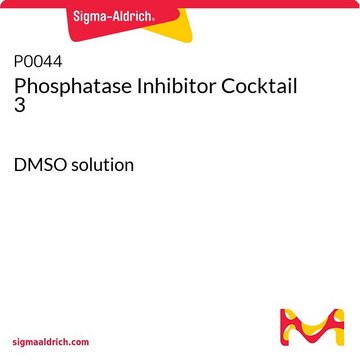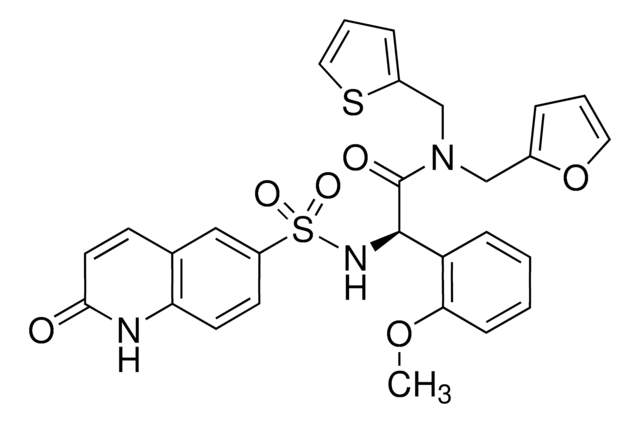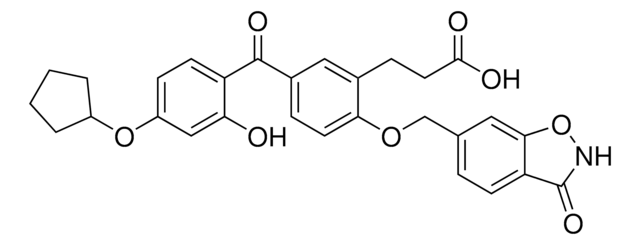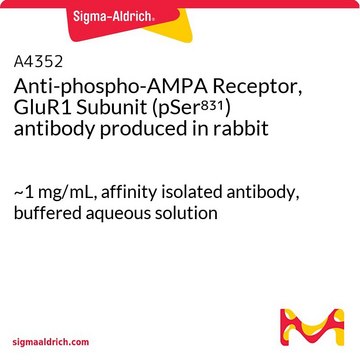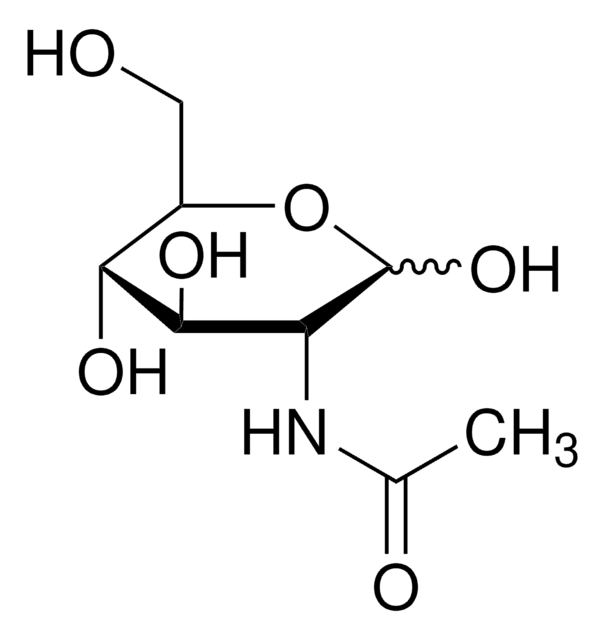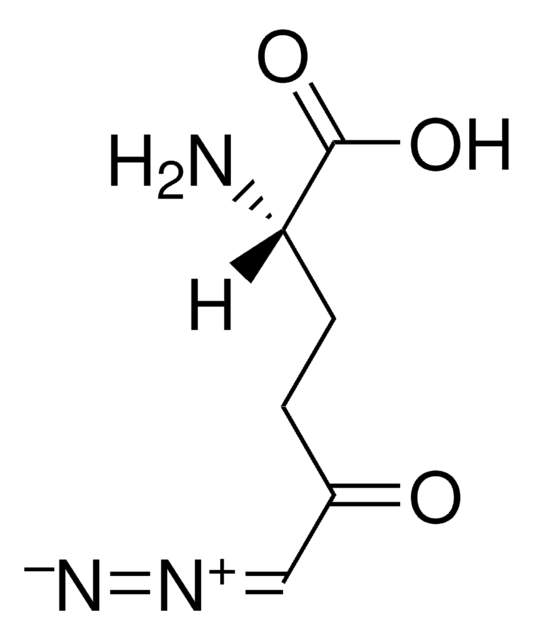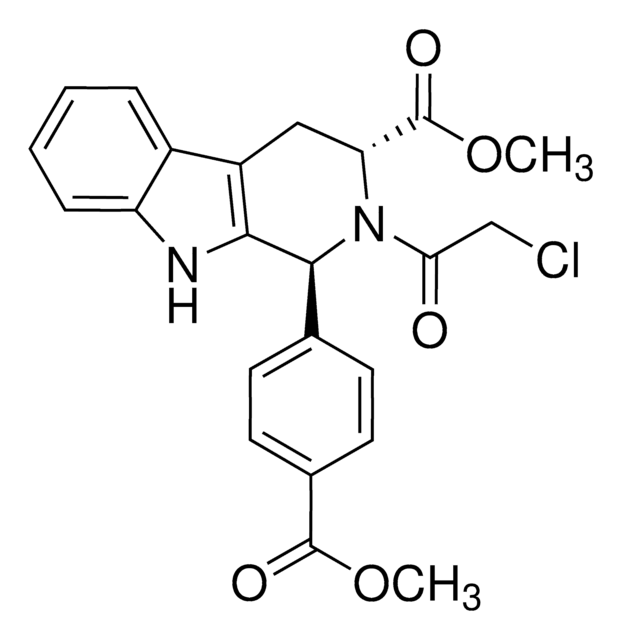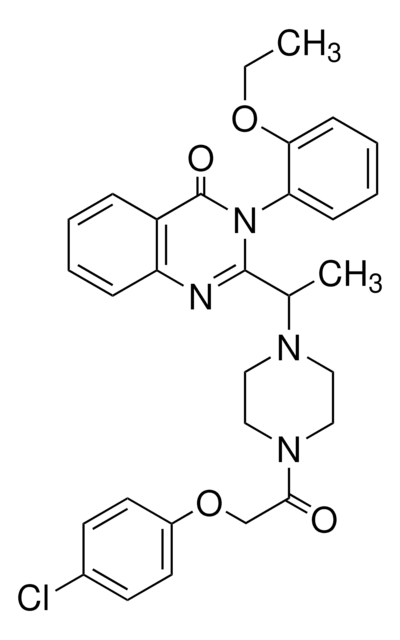A7229
PUGNAc
≥95% (HPLC)
Synonyme(s) :
O-(2-Acetamido-2-deoxy-D-glucopyranosylidenamino) N-phenylcarbamate
About This Item
Produits recommandés
Niveau de qualité
Essai
≥95% (HPLC)
Forme
crystals
Température de stockage
−20°C
Chaîne SMILES
CC(=O)N[C@@H]1[C@@H](O)[C@H](O)[C@@H](CO)O\C1=N/OC(=O)Nc2ccccc2
InChI
1S/C15H19N3O7/c1-8(20)16-11-13(22)12(21)10(7-19)24-14(11)18-25-15(23)17-9-5-3-2-4-6-9/h2-6,10-13,19,21-22H,7H2,1H3,(H,16,20)(H,17,23)/b18-14-/t10-,11-,12-,13-/m1/s1
Clé InChI
PBLNJFVQMUMOJY-JXZOILRNSA-N
Vous recherchez des produits similaires ? Visite Guide de comparaison des produits
Application
Actions biochimiques/physiologiques
Code de la classe de stockage
11 - Combustible Solids
Classe de danger pour l'eau (WGK)
WGK 3
Point d'éclair (°F)
Not applicable
Point d'éclair (°C)
Not applicable
Équipement de protection individuelle
Eyeshields, Gloves, type N95 (US)
Faites votre choix parmi les versions les plus récentes :
Déjà en possession de ce produit ?
Retrouvez la documentation relative aux produits que vous avez récemment achetés dans la Bibliothèque de documents.
Les clients ont également consulté
Articles
Review article and products for sialic acid synthesis and signaling.
Glucose metabolism is regulated by the opposing actions of insulin and glucagon. Insulin is released from pancreatic ß cells in response to high blood glucose levels and regulates glucose metabolism through its actions on muscle, liver, and adipose tissue.
Notre équipe de scientifiques dispose d'une expérience dans tous les secteurs de la recherche, notamment en sciences de la vie, science des matériaux, synthèse chimique, chromatographie, analyse et dans de nombreux autres domaines..
Contacter notre Service technique